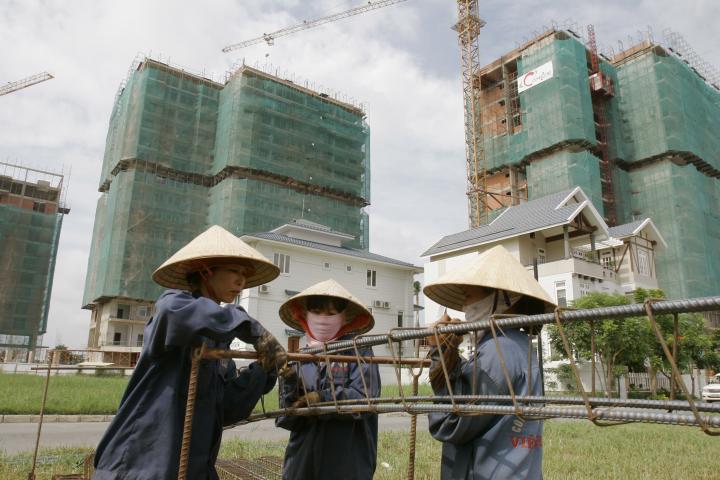
Slowdowns in emerging markets don’t bode well for the asset class, but as we know, one market is not like another. In this top 5, Morningstar analyst Thomas De Fauw looks at funds that focus on opportunities in Southeast Asia.
Investors mainly invest in emerging markets because economic growth there is usually higher than in more developed markets. Although this is still the case, the difference has recently fallen to an all-time low.
With higher US interest rates on the horizon and a potentially stronger dollar, the prospects for emerging markets look even bleaker and the risks associated with investing in them all the higher. But what is sometimes overlooked is that many emerging economies are now in a much better position to cope with financial and economic difficulties than in the past.
A classic example are the economies of Southeast Asia. They ran up current account deficits before the Asian financial crisis, but then managed to implement the necessary reforms and, as a result, have run surpluses in recent years. Many of them moved to floating exchange rates, built up reserves in foreign currencies, deepened local capital markets and thus became less dependent on foreign capital.
Between hope and fear
At the start of this year, some investors are nevertheless hopeful in anticipation of a further reopening of trade and the economy, including lifting travel restrictions in Thailand. Indonesia, in turn, may benefit from higher commodity prices, including in palm oil. In addition, the world’s fourth-largest nickel supplier is also well positioned in the EV supply chain.
Nevertheless, caution is advised for the region, given the above-mentioned challenges, while relative and historical valuations are not very attractive. Moreover, the composition of equity markets may also play tricks on the index in the coming years.
Indeed, 37 percent of the MSCI Asean index is made up of financial stocks, mainly traditional banks that are experiencing increasing competition from new financial technology platforms. For example, according to estimates by S&P Global Market Intelligence, e-wallets processed about 72 percent of electronic money payments in Indonesia. This is mainly at the expense of card payments.
Strong year for Vietnamese equities
Southeast Asian stocks generally outperformed Chinese ones in 2021. The MSCI China index ended 2021 with a loss of 15.8 percent, while the MSCI Asean index ended the year 7.6 percent higher. However, it lagged far behind global equities, as the MSCI All-Country World index posted a gain of 27.5 percent, measured in euros.
The MSCI Asean index consists of 159 companies spread across Singapore (31.9 percent), Thailand (20.5 percent), Indonesia (17.7 percent), Malaysia (16.3 percent), the Philippines (9.0 percent) and Vietnam. The latter had a barnstorming year in 2021 with a 34.3 percent return for the MSCI Vietnam index thanks to increased interest from local investors, while foreign investors spooked by corona and supply chain problems sought the exit. Although liquidity tripled last year and more than 40 companies now have a market capitalisation above one billion dollars, it remains to be seen when Vietnam can join the MSCI Emerging Market index club. For now, MSCI still classifies the country as a Frontier Market. A reform of foreign ownership limits is the biggest hurdle.
The Top 5
For Benelux investors, there are few funds available with a specific focus on Southeast Asia. That is why this week analyst Thomas De Fauw provides an overview of the four best-performing funds in the Morningstar category “Asean Shares” over the last twelve months to the end of January 2022.
In first place is the Fidelity Asean Fund, which has been managed by the experienced Madeleine Kuang since 2018. In July 2021 she was also put in charge of the Fidelity Emerging Asia Fund, which receives a Neutral rating from Morningstar analysts, and was previously managed by Teera Chanpongsang.
Kuang takes a strictly fundamental bottom-up approach and looks for Asean stocks trading below their intrinsic value. However, we see mainly index heavyweights in the portfolio. The portfolio is overweight in the financial sector with positions in DBS Group (9.2 percent), Bank Central Asia (5.9 percent) and UOB (6.0 percent), among others, and underweight in the real estate and communications sectors. The fund has 2.5 percent exposure to Vietnamese equities.
Also in Morningstar’s list is JPM Asean Equity Fund which has a Morningstar Analyst Rating of Gold, said De Fauw. Since January 2009 this strategy has been managed by the experienced Pauline Ng, accompanied by three co-managers who are the country specialists of her five-person Asean team and have an average of 16 years of experience. In addition to this team, the managers are also well supported by 15 sector analysts.
Its strategy is to identify quality growth companies that have the ability to consistently generate cash and have a strong balance sheet and management team. The fund is currently overweight in the communications sector with a large position in Sea Ltd, a gaming and e-commerce player in the region and financial sector stocks. It is underweight in real estate and consumer goods. The strategy has 2.7 percent of its assets in Vietnam.
Top 5 - Netherlands:

Top 5 - Belgium:
